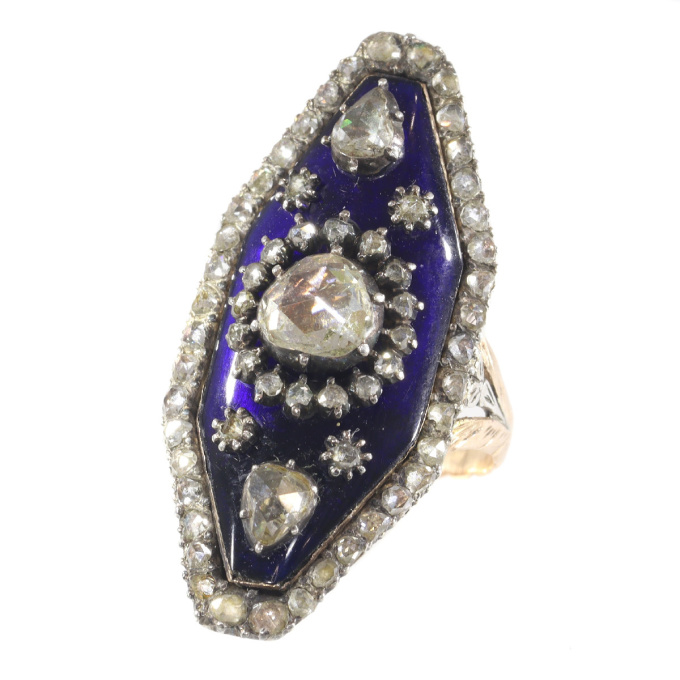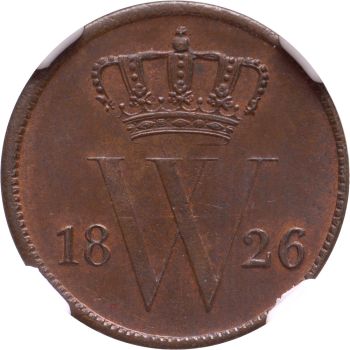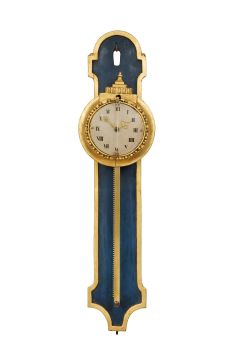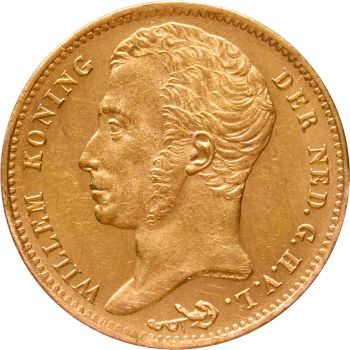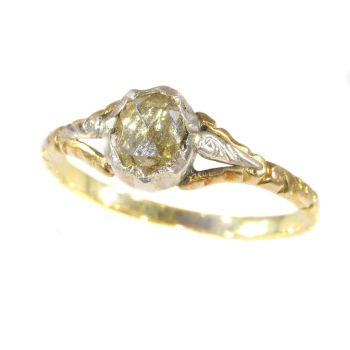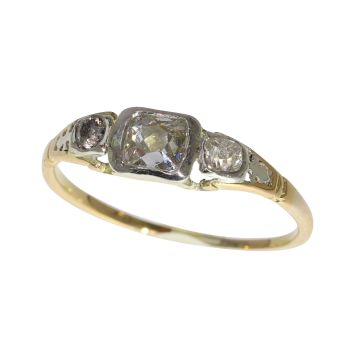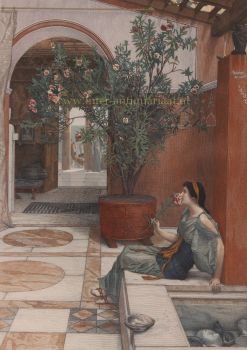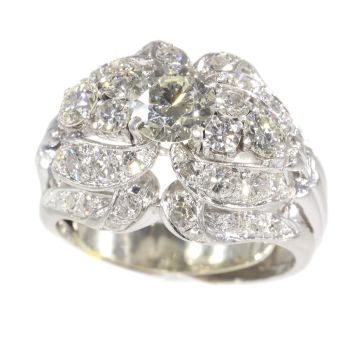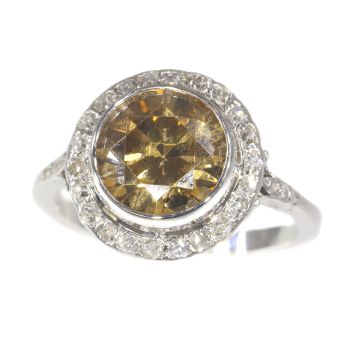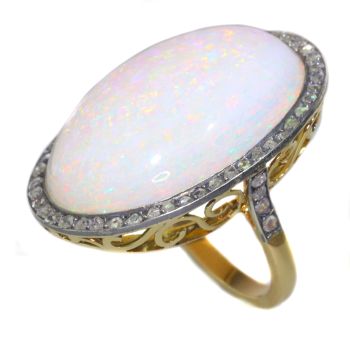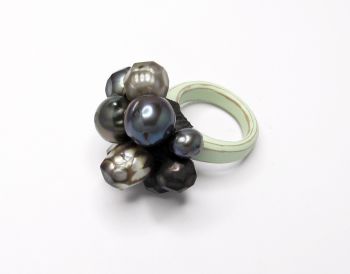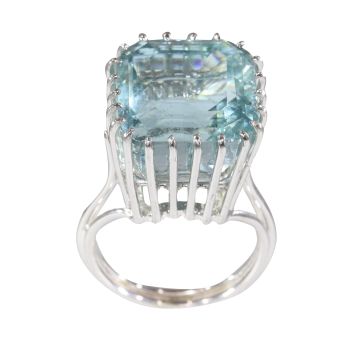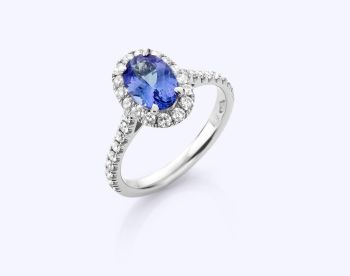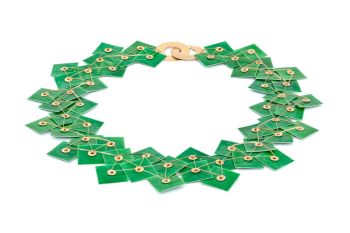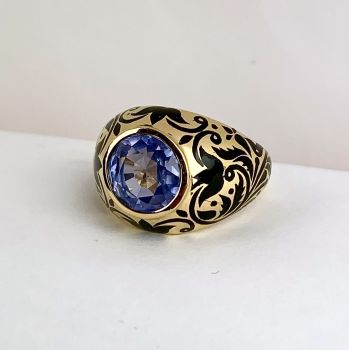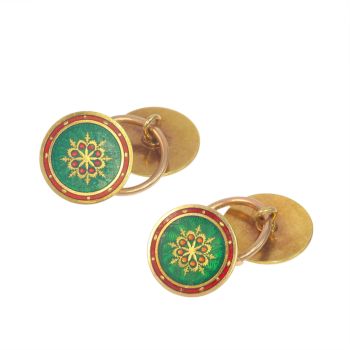Prachtige Victoriaanse roosgeslepen diamanten ring met blauw emaille 1830
Onbekende Kunstenaar
Email
Momenteel niet beschikbaar via Gallerease
- Over kunstwerk
Antique jewelry object group: ring
Condition: excellent condition
- (more info on our condition scale)
Country of origin: unknown
Style: Early-Victorian - Victorian decorative arts refers to the style of decorative arts during the Victorian era. The Victorian era is known for its eclectic revival and interpretation of historic styles and the introduction of cross-cultural influencesfrom the middle east and Asia in furniture, fittings, and Interior decoration. Victorian design is widely viewed as having indulged in a regrettable excess of ornament. The Arts and Crafts movement, the aesthetic movement, Anglo-Japanese style, and ArtNouveau style have their beginnings in the late Victorian era.
- See also: early-Victorianor more info on styles
Style specifics: Victorian - In 1837 Queen Victoria begins the longest reign in the history of Great Britain. For 64 years, from 1837 till 1901, she symbolizes the growth and triumph of the British Empire as Queen of Great Britain and Ireland and Empress of India.Proud, passionate about beautiful things, highly educated about all styles of time, she influences the lifestyles through her taste and immense love of jewelry.
Victorian decorative arts refers to the style of decorative arts during the Victorian era. The Victorian era is known for its eclectic revival and interpretation of historic styles and the introduction of cross-cultural influences from the middle eastand Asia. The Arts and Crafts movement, the aesthetic movement, Anglo-Japanese style, and Art Nouveau style have their beginnings in the late Victorian era. (Last part freely rendered from: Wikipedia)
Period: ca. 1840
- (events & facts of this era, poetry of this era, fashion of this era)
Material: 14k pink gold and silver, see also: The silver on gold technique (touchstone tested)
- (more info on precious metals)
Technique: The rose cuts are set on foil. This is a special technique that was used to bring the lustre of the diamonds to its best quality.
The blue part could be either a glass plate or an enameled metal plate.
Enamelling is an old and widely-adopted technology. The ancient Egyptians applied enamels to pottery and stone objects. The ancient Greeks, Celts, Russians, and Chinese also used enameling processes on metal objects. Enamel is the colorful result offusing powdered glass to a substrate by firing, usually between 750 and 850 degrees Celsius. The powder melts and flows and hardens to a smooth, durable vitreous coating on metal, glass or ceramic. According to some sources, the word enamel comes fromthe High German word smelzan (to smelt) via the Old French esmail. Used as a noun, "an enamel" is a usually small decorative object, coated with enamel coating, such as a champlevé or a cloisonné (different techniques).
Diamond(s): 62 rose cut diamonds. We do not have the weight of the diamonds which is normal in our trade when it comes to rose cuts.
- All diamonds we offer are screened by the IJGC - lab (www.ijgc-worldwide.com) for whether they are natural or synthetic, and all diamonds in this jewel are 100% guaranteed to be natural.
Birthstones: Diamond is the birthstone (or month stone) for April.
- (more info on birthstones)
Hallmarks: No trace.
- (more info on hallmarks)
Dimensions: length of top of ring 3,58 cm (1,41 inch) - See picture with a ruler in cm and inches
Weight: 7,20 gram (4,63 dwt)
Ring size Continental EU: 57 & 18¼ , Size USA: 8 , Size UK: P½
Resizing: Free resizing (only for extreme resizing we have to charge).
- (more info on ring sizes)
Adin Reference Nº: 21028-0236
Copyright photography: Adin, fine antique jewellery
jewelry with enamel, pink gold jewelry, tri-color jewelry, silver on gold jewelry, latest acquisitions,
antique jewelry, estate jewelry, vintage jewelry or modern jewelry
Jewelry with birthstones (or month stones) for:
January - February - March - April - May - June - July
August - September - October - November or December.
Additional information:
jewelry glossary - wall of fame - visit us in Antwerp - subscribe to our mailinglist.
What is antique jewelry? - What is estate jewelry? - What is vintage jewelry?
- Over kunstenaar
Het kan voorkomen dat een kunstenaar of maker onbekend is.
Voor sommige werken is het niet te bepalen door wie het gemaakt is of dat het is gemaakt door (een groep) ambachtslieden. Voorbeelden zijn beelden uit de Oudheid, meubels, spiegels of handtekeningen die vaak niet duidelijk of leesbaar zijn. Maar ook sommige werken zijn helemaal niet gesigneerd.
Ook kunt u de volgende beschrijving vinden:
•"Toegeschreven aan …." waarschijnlijk een werk van de kunstenaar maar niet zeker of gedeeltelijk
•“Atelier van ….” of werkplaats van” een werk uitgevoerd in het atelier of atelier van de kunstenaar, eventueel onder zijn toezicht
•“Cirkel van ….” een werk uit de periode van de kunstenaar die zijn invloed laat zien, nauw verbonden met de kunstenaar maar niet noodzakelijkerwijs zijn leerling
•“Stijl van ….” of “Volger van ….” een werk uitgevoerd in de stijl van de kunstenaar, maar niet noodzakelijk door een leerling; kan eigentijds of bijna eigentijds zijn
•“Wijze van ….” een werk in de stijl van de kunstenaar maar van latere datum
•"Na …." een kopie (van welke datum dan ook) van een werk van de kunstenaar
•“Getekend…”, “Gedateerd….” of “Ingeschreven” dan is het werk gesigneerd/ gedateerd/ ingeschreven door de kunstenaar. De toevoeging van een vraagteken duidt op een element van twijfel
•"Met handtekening ...", "Met datum ...", "Met opschrift..." of “Draagt signatuur/datum/opschrift” dan is de handtekening/datum/opschrift toegevoegd door iemand anders dan de kunstenaar
Artwork details
Related artworks
Onbekende Kunstenaar
Cristallo façon de Venise Drinkglas1600 - 1650
Prijs op aanvraagPeter Korf de Gidts - Antiquairs
1 - 4 / 12- 1 - 4 / 24
- 1 - 4 / 24
- 1 - 4 / 24

